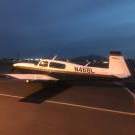Oxygen: Mountain High vs. Precise Flight
-
Members Online
- 1980Mooney
- Fly Boomer
- TCC
- Planegary
- BrentS
- kortopates
- Rick Junkin
- CCAS
- Aerodon
- Flyler
- MikeOH
- Neshi
- donkaye
- jamesyql
- Boboli
- Rsmithref
- hammdo
- philiplane
- hubcap
- ArtVandelay
- Schllc
- gevertex
- exM20K
- 201er
- 4cornerflyer
- prillayo03
- MattD89
- Scott Ashton
- dwm20r
- N201MKTurbo
- ohdub
- BrianWilkins
- takair
- navysix
- MB65E
- Hank
- IFLYIFR
- M20E for me


Recommended Posts
Join the conversation
You can post now and register later. If you have an account, sign in now to post with your account.